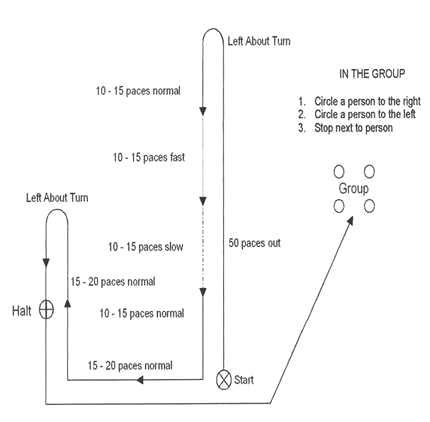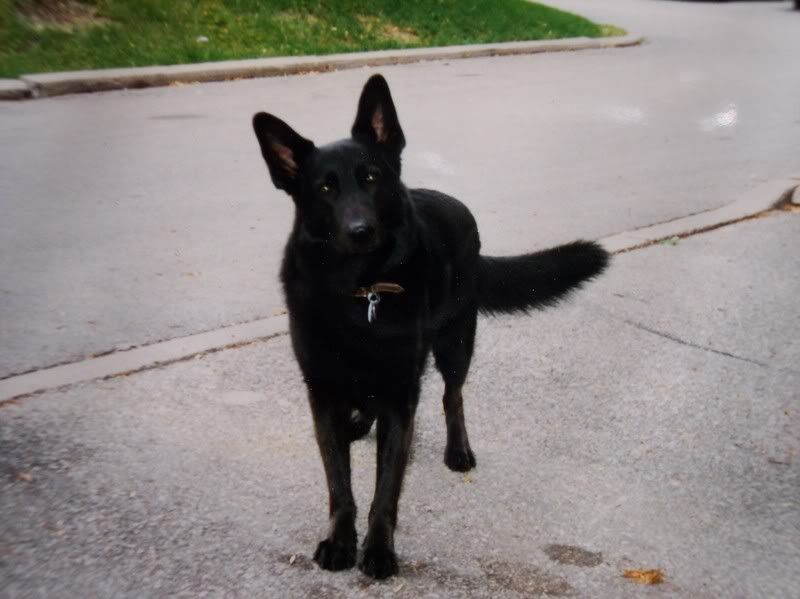 Schutzhund trials are few and far between here in Ontario, so when one is being held, I always try and go out to watch. One can often learn a lot by watching trials, and I find the judges' critiques very helpful. I attended a trial this past weekend as a spectator. I have recently paid very close attention to the handlers in trials. I have found that there is a wide range of handling styles, but they can basically be broken down into 2 broad categories; Confident and Non-Confident handling. The handler's body language speaks volumes to the spectators, the judge, and of course, the dog. The handlers I admire the most are those with confident and smooth handling. Even when things start to fall apart on you out on the trial field, or when the unexpected happens, those who maintain their composure and smooth, confident handling present an overall excellent picture.
Schutzhund trials are few and far between here in Ontario, so when one is being held, I always try and go out to watch. One can often learn a lot by watching trials, and I find the judges' critiques very helpful. I attended a trial this past weekend as a spectator. I have recently paid very close attention to the handlers in trials. I have found that there is a wide range of handling styles, but they can basically be broken down into 2 broad categories; Confident and Non-Confident handling. The handler's body language speaks volumes to the spectators, the judge, and of course, the dog. The handlers I admire the most are those with confident and smooth handling. Even when things start to fall apart on you out on the trial field, or when the unexpected happens, those who maintain their composure and smooth, confident handling present an overall excellent picture.The other thing that I find astonishing is how many handlers make unnecessary handling errors that cost points. In this case, handlers are simply giving points away. It is a needless practice and, in my opinion, almost completely preventable. Certainly I will agree that trial nerves sometimes get the better of us as dog handlers, and due to nerves, we may forget things out there on the trial field. These mistakes should be rare occurrences, however, not frequent happenings. Perhaps it is my strong competitive agility background that is influencing me, but I simply feel that with just a little effort in trial preparation, handler mistakes can be minimal. In agility, handler errors are so extremely costly. It can cost you a clean run or a first place finish at a large competition. In agility the course is never the same. The handlers get 7 minutes to walk the course, choose their path, and decide on their handling strategy. In schutzhund, the obedience routine is always the same, it never changes. You know ahead of time what you must do at each level, which order you must perform the required exercises, and what commands to use. This should all be virtually automatic for the handlers. With having a solid, automatic handling system in place, it is one less thing the handler must think about while out on the trial field. And, because we all know ahead of time exactly what is expected, there is really no excuse for seemingly senseless handler errors. Except of course those that occur due to handler nerves or stress. What we should all be striving to achieve is what has long been common practice in the agility world; muscle memory. Many high level competitive sports require the participant to have muscle memory to be successful. Schutzhund should be no different. If you ever watch handlers at the world level in schutzhund, it is a very rare sight indeed to see a handler make an error. It would also be very counter productive to do so... when you are competing for a world championship, giving points away for things such as not taking enough steps in the buildup of your motion exercises or not assuming the basic position with your dog in between exercises will be catastrophic in term of your placement. I believe that all handlers can achieve this level of handling with some simple steps.
Because we all know the routine in advance, and it never changes, we should be out practicing the routine on the trial field without our dogs. Yes, that is correct, without the dog. Go out and walk the entire routine, and use all the commands you would use if your dog was there. Practice counting the paces in your head over and over again. The last thing you need on trial day is to try and remember how many paces are required for each part of the routine. This should be automatic. I also throw in there the exact moments when I plan to reward my dog with light praise, as it is allowed in the rules. This way it becomes automatic. I don't have to think about it. I practice throwing the dumbbell over the jumps, and all other aspects of the routine. If my rehearsed movements for each part of the routine are absolutely correct, the likelihood of me making handler errors out there is significantly diminished, as I have learned muscle memory for these required elements. This is a skill I have learned through many years of competitive agility. It is a skill that all of us can master with a little practice.
Below is the heeling pattern for all levels in schutzhund.





No comments:
Post a Comment